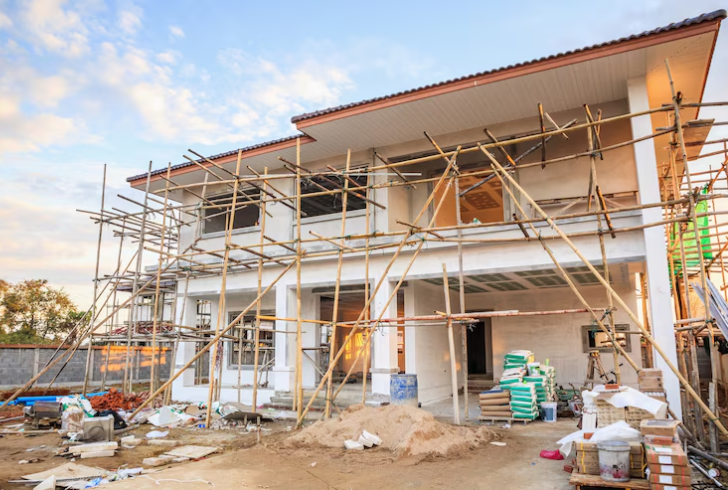The housing market has been in a state of paralysis in 2024, with the lowest turnover rate seen in over 30 years. Despite high hopes for a recovery, a combination of factors has kept the market from moving forward, leaving many potential buyers and sellers in a holding pattern. Recent data reveals that only 2.5% of homes in the U.S. have changed hands in the first eight months of the year, indicating a stagnation that has yet to improve.
With mortgage rates at elevated levels and home prices still high, the housing market continues to struggle with affordability, forcing many buyers to sit on the sidelines.
Why Is the Housing Market Struggling?
Several key factors are contributing to the current sluggish pace of home sales. One of the main reasons is the combination of high home prices and mortgage rates, which has made purchasing a home increasingly difficult. For the average American, homeownership is becoming less achievable, and many are reluctant to sell their homes and buy new ones, especially with rising interest rates.
At the same time, housing inventory is at record lows, making it even more difficult for buyers to find homes within their price range. With fewer homes on the market, the supply-demand imbalance continues to push prices up, further exacerbating the problem.

Freepik | Achmad Khoeron | Soaring costs for homes and mortgages are slowing down the housing market.
Key Factors Impacting the Housing Market:
1. High Home Prices
Home prices have remained elevated, preventing many potential buyers from entering the market. This trend is especially evident in popular metro areas, where demand remains high but the supply of homes is limited.
2. Mortgage Rates
Elevated mortgage rates continue to be a barrier to entry for many buyers. Even with a slight decrease in recent months, the rates are still high compared to historical standards, making it difficult for people to afford a new home.
3. Inventory Shortage
The lack of available homes is one of the most significant issues facing the housing market today. With fewer homes to choose from, competition among buyers has increased, pushing prices even higher.
Regional Differences in the Housing Market
While the overall housing market is slow, there are significant variations depending on the location. Certain regions have seen more activity than others, with suburban and rural areas experiencing slightly better turnover than urban centers. However, some of the largest cities, particularly in California, have faced a more significant downturn in sales.
Los Angeles
The city has seen the lowest turnover rate of any metro area, with just 15 homes per 1,000 sold, a sharp decrease from past years. The high cost of living, combined with limited new construction, has made homes unaffordable for many residents. Additionally, the economic slowdown in industries like entertainment has further dampened the housing market in the area.
Boston
Boston has seen a nearly 38% drop in home sales compared to five years ago, a sign that even cities with traditionally high demand are struggling to maintain a steady pace in home transactions.
Austin, Texas
Austin, which has gained popularity in recent years as a tech hub, has experienced one of the largest declines in home sales. The market in this Texas city has slowed drastically, reflecting a broader trend in many high-demand areas.
The Effects of the “Lock-In Effect”
One of the biggest contributors to the current stagnation in the housing market is the so-called “lock-in effect.” Homeowners who locked in low mortgage rates before 2022 are reluctant to sell their homes and buy new ones at higher rates. This phenomenon is especially prevalent among homeowners with interest rates below 4%, who would face significantly higher monthly payments if they were to move.
This effect has resulted in a cycle where many homeowners choose to stay put, keeping the supply of available homes low and making it harder for first-time buyers or those looking to move up the property ladder to find a home.
Possible Solutions to Revitalize the Housing Market

Freepik | kwangmoop | Increasing housing market supply through new construction can alleviate pressure and stabilize prices.
1. Increase Housing Inventory - Both new construction and unlocking existing homes for sale would help relieve the pressure on the housing market. By making more homes available, the balance between supply and demand could improve, which would help stabilize prices.
2. Decrease Mortgage Rates - Additional cuts to mortgage rates could help make buying homes more affordable for many Americans. A more affordable mortgage rate would make it easier for first-time buyers to enter the market and help those looking to move up the property ladder.
3. Encourage Homeownership - Providing incentives for homeownership, such as tax breaks or down payment assistance, could help individuals who are hesitant about entering the market due to high prices and interest rates.
What’s Next for the Housing Market?
As 2024 continues, the housing market’s recovery remains uncertain. While slight improvements have been seen, many challenges still exist. The key to revitalizing the market lies in addressing the current supply shortages and providing relief to buyers facing high interest rates.
Until these issues are resolved, the housing market will likely remain stagnant, making it harder for many Americans to achieve the dream of homeownership. Only time will tell how quickly the market can recover, but for now, the future remains uncertain.





